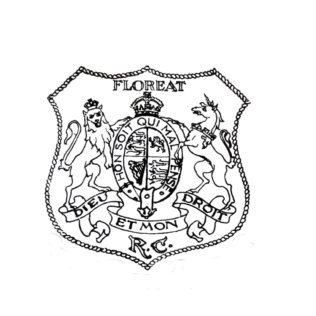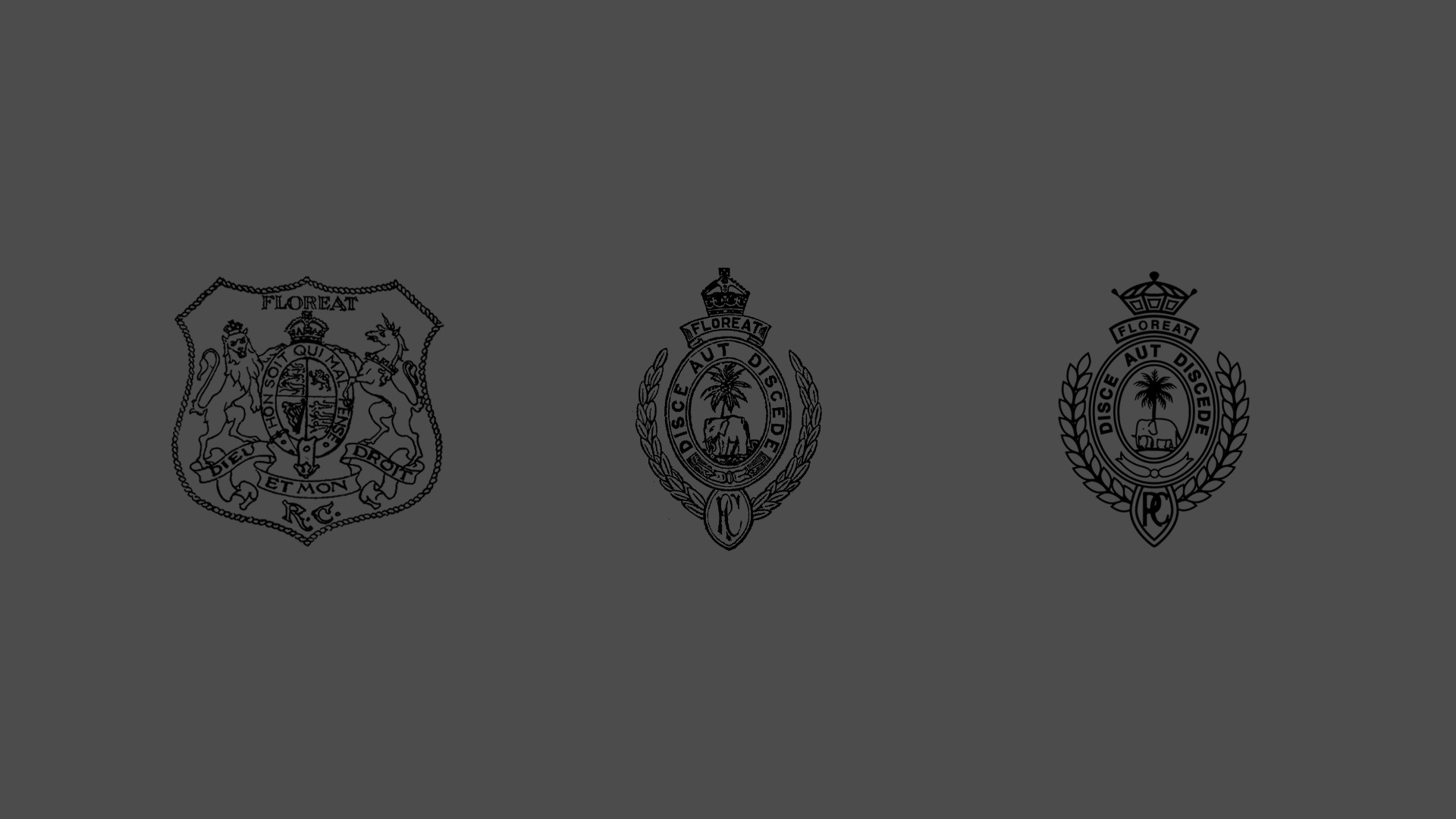There is no mention of a College Crest in any document prior to 1892. Ceylon being a Crown Colony of the British Empire, the Imperial Emblem – the Lion and the Unicorn was Ceylon’s Badge. The Colombo Academy, later named the Royal College being a Government Educational Institute had to use the British Royal Arms Emblem. The first display of the Crest (Royal Arms) is on the cover of the first Royal College Magazine of January 1893. In 1895 the Cricket Team had a simple Crest on a Blue Blazer. The Crest on the top Blazer pocket had a shield with the letter R.C in Gold with a scroll. The word FLOREAT (meaning let flourish) was embroidered in gold letters above the Shield.

The photograph in this Chapter depicts various designs of the Imperial Emblem on the Magazine cover and on the cover of books given at the College Prize Distributions. The book given as a Prize to R. A. I. Ekanayake (Cricket Captain) in 1897 had the Lion and the Unicorn emblem.

The British Royal Arms was used by the Cricketers as the Crest on a Blue Blazer from about 1905 and continued to be used till 1921. The word ‘Floreat’ appeared above the Crest and the letters R.C. below the Crest. The Royal Arms was rounded with Blue and Gold braiding resembling a Shield. The year in which the player represented the College appeared on a scroll below the Shield. The British Imperial Emblem has appeared in various shapes and sizes in the College Magazines in the years when the Royal College had no fixed ‘Crest’. For example, the Lion and Unicorn are seen in various positions and the Victorian crown was replaced by the Tudor crown in 1906.
The New Crest
In 1921 Principal Reed appointed a Committee of the newly formed Games Club to recommend a new Crest. The Editor of 1922 Easter Term Magazine wrote,
“It is as it should be, and it was felt that the Coat of Arms and Crest should be something unique to the institution.”
The power wielded by the British Empire in their heyday just emerging victorious from World War I was great. Looking back 60 years, why the British Government agreed to Principal Reed’s suggestion to dispense with the British Royal Arms and have a purely Ceylon symbol is a mystery. The new symbol strangely happened to be the Elephant and the Coconut Palm. To add to the mystery, of a crest with a purely Ceylon symbol, it was only for the Royal College and no other Government Institution. Whether anything of a similar nature was allowed in any other British Dominion or Colony at that time is not known.

“I have to announce with the greatest pleasure that the Government has sanctioned the use of our new Royal College Arms in place of the Royal Arms in the past in common with many branches of the Government throughout the Empire. For the design which is produced in today’s Prize List and on many of the Prize books, we are indebted to Mrs. F. D. Wijesinghe, the wife of a member of the staff.”
Principal Reed in his Prize Day Speech on 8th December 1922
The Magazine says a design for the Royal College arms has now been approved by the Government so that we shall no longer share armorial bearings with every Government Department all over the Empire. We are not versed in heraldic technology, but a layman’s description of the new arms will be of interest and is as follows:
“Elliptical shield with Motto Disce Aut Discede round the edge. In the shield, an Elephant and a Palm is surrounded by the word FLOREAT on a scroll which in turn surmounted by the Crown and Laurel Wreaths on the right and left of the shield and separated from it with initials R.C. at the base while the two wreaths nearly meet.”
“For the approved design, the school is indebted to Mr. F. D. Wijesinghe to whom we offer our cordial thanks. It is hoped that representations of the arms will soon be on view in such printed places as the Royal (College) Arms have usually occupied. Colours of these arms have not yet been settled. Discussion of the subject is invited when the design has been seen generally.
With the granting of Independence in 1947, Ceylon’s National Emblem changed. The Sinhalese Crown replaced the British Crown, but it was 10 years later that the original College Crest of 1922 with the British Crown was replaced with the Sinhalese Crown. The College Magazine first carried the new crest in the April 1957 issue and the Annual Prize Day Report first had the new crest in 1959.


